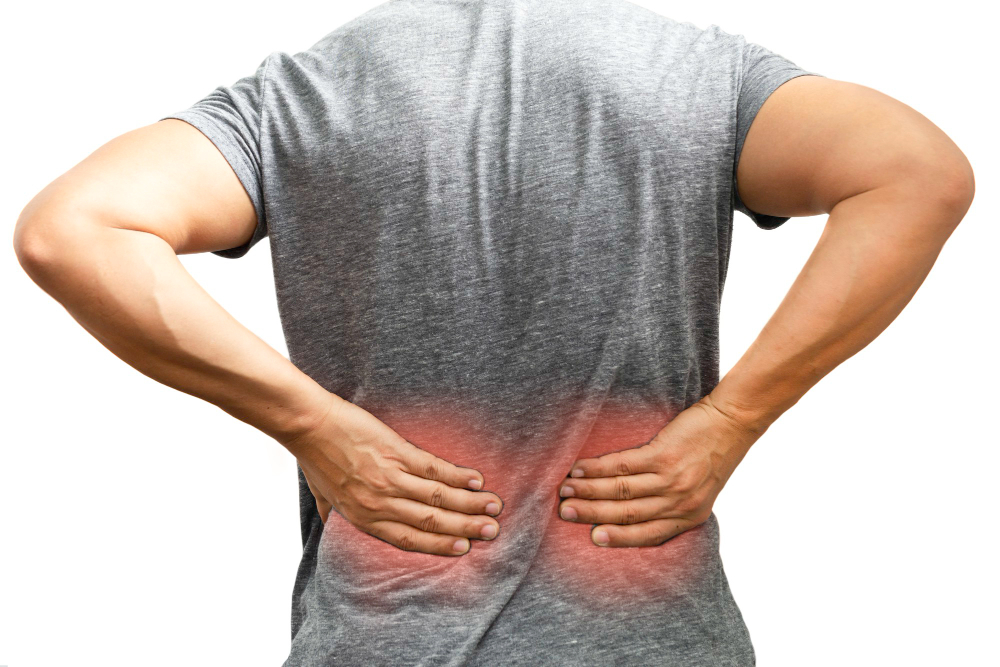Back Pain

Back pain is a prevalent health issue affecting millions worldwide, characterized by discomfort or pain in the upper, middle, or lower back. It can vary in intensity, from mild and intermittent to severe and debilitating, impacting daily activities and quality of life.
Common Causes:
Muscle or Ligament Strain: Often due to heavy lifting, sudden movements, or poor posture.
Herniated Discs: When the soft inner material of a spinal disc protrudes through the tough outer layer, irritating nearby nerves.
Degenerative Disc Disease: Wear and tear on discs and vertebrae with age, leading to pain and stiffness.
Spinal Stenosis: Narrowing of the spinal canal, compressing nerves.
Osteoarthritis: Breakdown of cartilage in joints and discs of the spine.
Skeletal Irregularities: Conditions like scoliosis can cause pain due to abnormal spinal curvature.
Symptoms:
Localized Pain: Pain in the neck, upper back, or lower back.
Radiating Pain: Pain that spreads to the arms, buttocks, or legs (sciatica).
Muscle Spasms: Involuntary muscle contractions contributing to pain and stiffness.
Limited Mobility: Difficulty bending, lifting, or standing for prolonged periods.
Diagnosis and Treatment:
Diagnosis involves a physical exam, review of medical history, and may include imaging tests like X-rays, MRI, or CT scans. Treatment varies based on the cause but often includes:
Medications: Pain relievers, muscle relaxants, or anti-inflammatories.
Physical Therapy: Exercises to strengthen muscles, improve flexibility, and correct posture.
Injections: Epidural steroid injections or nerve blocks for pain relief.
Surgery: In severe cases or when conservative treatments fail, surgery may be necessary.
Prevention:
Maintain Good Posture: Practice proper lifting techniques and ergonomics.
Exercise Regularly: Strengthen core muscles and stay active to support the spine.
Maintain a Healthy Weight: Excess weight can strain the back muscles and spine.

